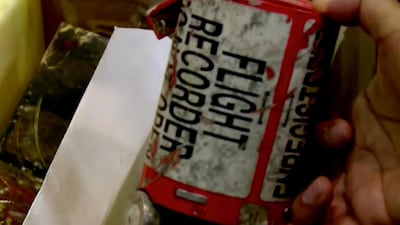In the wake of a plane crash or other aviation disasters, safety experts begin their search for the aircraft’s black box, an almost indestructible device which records crucial information about a flight.
The name “black box” is, in a modern context, deceiving. The flight recorder is neither black, nor a box but instead is bright orange and partly cylindrical.
What does the black box record?
The black box records two important kinds of information and is, for this reason, made of two constituent parts.
The first, the Flight Data Recorder (FDR), collects all the information about the flight, preserving hundreds of parameters that will show what happened to a plane at the time of a crash.
The second component, the Cockpit Voice Recorder, (CVR) records the conversations of the pilots. Many plane crashes are the result of human error, and so recordings of the discussions of pilots and staff in the build up to a tragedy is often invaluable.
How does a black box survive impact?
The black box is specifically designed to withstand immense pressure, extremely high temperatures and long periods underwater.
The device must be able to survive a fire of 1,100 °Cfor an hour and a crush force of 5,000 lbs. Modern FDRs tend to be fashioned from stainless steel or titanium with high-temperature insulation.
How do you read a black box?
One of the greatest barriers, often, to reading a black box is finding it. For this reason, the boxes are fitted with underwater locator beacons.
The earliest CVRs were recorded on analogue tape but contemporary designs use digital memory and recording. The information stored on them has to be removed in lab conditions.
The countries capable of analysing the data on black boxes are relatively few and include, notably, the US, Britain, France and Germany.

